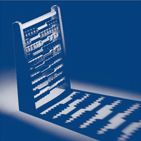Pension Contribution Limits
Background
The limit on pension contributions for tax relief purposes has changed frequently and there are a number of different limits which can apply. Today we are summarising the rules, with emphasis on traps for higher earners.
Generally speaking, payments to defined contribution pension schemes made by individuals are made net of tax. This means that for a cash payment of £1,000 by an individual, the government will add £250 or 25% of the cash payment to the pension fund. In addition, higher (40%) and additional (45%) rate tax payers can receive further benefits from the contribution extending their lower tax band, so that more of their income is taxed at a lower rate.
There were rumours that the Chancellor would change the calculation of tax relief in the Budget last week, but there were no new announcements so the current system will continue.
As the end of the tax year is coming up on 5 April 2016, this is an ideal time to review contributions and consider taking advantage of the tax relief on offer.
Earnings Limit
The first limit relates to income. An individual can only contribute 100% of pensionable earnings, such as salary, employment benefits, bonus, trading income etc. If an individual has no income during a tax year then they can contribute £2,880 and the government will add £720.
Additional amounts can be contributed, but the government will not add to it.
Annual Allowance Limit
In addition to the above limit, there is an Annual Allowance limit. Currently this is £40,000 per tax year, and includes both employees (gross) and employers contributions. Any unused allowance can be brought forward from the three previous periods, if an individual was a member of a pension scheme during that period.
Tapered Annual Allowance
From 6 April 2016, the Annual Allowance is tapered down to a minimum of £10,000. This applies where an individuals ‘adjusted income’ for the tax year exceeds £150,000. The reduction is £1 of allowance removed for every £2 of income over the £150,000 limit so that it falls to £10,000 when adjusted income reaches or exceeds £210,000.
Adjusted income is very broadly income plus pension contributions made under net pay arrangements or by an employer to counter salary sacrifice arrangements where salary is reduced in exchange for a higher pension contribution.
If an individual is making a number of contributions through different methods, eg employer, salary sacrifice and directly, then an Annual Allowance charge could be applied if the limits are exceeded. This may lead to surprise tax bills as pension payments made by employers and through salary sacrifice would not normally form part of a self assessment tax return.
There are further complications if an individual has already accessed some of their pension fund. We strongly recommend taking advice from an Independent Financial Adviser to ensure contributions are dealt with correctly.
To see our other news items please visit our Muras Baker Jones – Blog.



